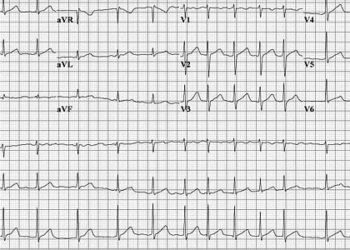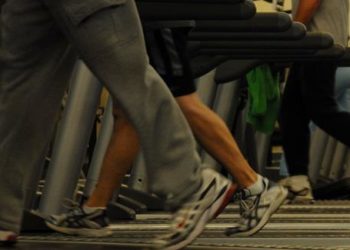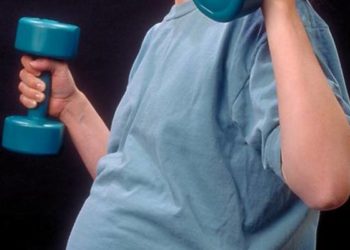Wellness Check: Exercise
2 Minute Medicine is pleased to announce that we are launching Wellness Check, a new series dedicated to exploring new research evidence focused on wellness. Each week, we will report on articles examining different aspects of wellness, including (but not limited to) nutrition, sleep, reproductive health, substance use and mental health. This week, we explore the latest evidence-based updates in exercise.
Consistent physical inactivity may increase the severity of COVID-19 infection
1. Being consistently inactive during the 2 years preceding the pandemic was found to carry a higher risk for hospitalization, admission to the ICU and death in COVID-19 infected patients compared to smoking and virtually all the chronic diseases found in the study.
2. When compared with consistently inactive patients, those who did some activity had lower odds for hospitalization and death, which suggests that any amount of physical activity may have benefit.
Evidence Rating Level: 2 (Good)
It is well known that regular physical activity has multiple benefits, one of which includes reducing the risk of systemic inflammation which is a main contributor to lung damage caused by COVID-19. It has therefore been hypothesized that patients who consistently met the US Physical activity guidelines (at least 150 min/week of moderate to vigorous physical activity such as a brisk walk) would have less severe COVID 19 outcomes during their infection.
This retrospective observational study compiled self-reported physical activity among 48440 adult patients at Kaiser Permanente Southern California (KPSC) who were diagnosed with COVID-19 between 1 January 2020 and 21 October 2020. Patients were only included if they had 3 or more outpatient visits recording their exercise behavior between 19 March 2018 and 19 March 2020. There were 3 categories in this study: consistently inactive (<10 minutes of activity/week), inconsistently active (11-149 minutes/week) and consistently active (≥150 minutes of activity/week). The primary outcomes examined were hospitalization, admission to ICU, and death due to COVID-19.
Among these 3 groups, it was found that being consistently active had the lowest risk for COVID-19 death, hospitalization, and ICU admission; followed by being inconsistently active and finally with being consistently inactive. The study’s large sample size, demographic diversity and health variables strengthened the findings of this study. The main limitation was that physical activity was self-reported, which is prone to a social desirability bias. Nonetheless, the findings of this study suggest that in addition to following the public health safety guidelines, public health agencies should consider encouraging communities to engage in regular physical activity in order to reduce the risk of serious consequences after being infected with COVID-19.
Use of cloth face masks may reduce exercise performance because of discomfort
1. Use of a cloth face masks reduced exercise time by 14% and maximal oxygen consumption by 29% compared to no face mask in the same subjects during a maximal treadmill test.
2. Reduction in exercise performance was attributed to perceived discomfort with mask wearing, as majority of the sample agreed that it was harder to give maximum effort during exercise while wearing a cloth face mask.
Evidence Rating Level: 1 (Excellent)
Surgical face masks have become the most common type of mask used by the public ever since the release of current recommendations regarding mask wearing by the US Centers for Disease Control and Prevention. It would be useful to determine if masks significantly affect key variables during exercise performance as well as document the participant’s experiences while wearing a face mask during exercise.
This prospective, randomized crossover trial included 31 adult participants between 18-29 years of age. Participants were only included if they had no contraindications to maximal treadmill exercise testing. Participants performed an exhaustive incremental cardiopulmonary exercise test using a Bruce treadmill protocol in a masked and unmasked condition. The primary outcome was to determine if there were significant differences in measured physiological variables (e.g., oxygen consumption) in the masked vs. unmasked condition.
Results demonstrated that during the masked trial, there was a significant reduction in exercise time (by 14%) and oxygen consumption (by 29%) compared to the unmasked trial in the same participants. Furthermore, the majority of the sample either “agreed” or “strongly agreed” that it was harder to exert a maximal effort during the trial in which they were wearing a cloth mask. This study’s main strength was it’s adequate power, which was achieved through prior sample size calculations. The main limitation was the study’s recruitment of young, apparently healthy, physical active adults which may not be broadly applied to other patient populations. Nonetheless, this study was significant in suggesting that wearing a mask may reduce exercise performance in young healthy adults due to mask-wearing discomfort.
Combined exercise training reduced occupational burnout in helping professions
1. 8 weeks of combined exercise training helped to reduce emotional exhaustion, depersonalization, perceived stress and increased personal accomplishment in helping professionals.
2. There was not a significant decrease in measures of burnout in participants randomized to receive no intervention during the study interval.
Evidence Rating Level: 1 (Excellent)
Burnout is known to have significant impacts on job performance and quality of life, especially amongst members of helping professions (e.g., physicians, police, educators, nurses). There is currently a paucity of high-quality studies concerning the efficacy of exercise in reducing symptoms of burnout. As a result, it has been hypothesized that a previously validated combined exercise training regimen would be able to reduce burnout symptoms and perceived stress after 8 weeks of intervention.
This double blind randomized controlled study included 42 males aged 30-60 from helping professions suffering from occupational burnout between September and November 2019. Participants were excluded if they did not have a medical certificate attesting to their state of good physical health. Participants were randomly allocated into an intervention (n=21) or waitlist control (n=21). The intervention consisted of a combined circuit of resistance training and agility training for 60 minutes 3 days a week at a local fitness center. The Maslach Burnout Inventory (to measure work related burnout) and Perceived Stress Scale were administered at baseline (week 1) and after the intervention (week 8).
The intervention group showed a significant decrease in emotional exhaustion and perceived stress from pre to post intervention. There were no significant changes for either measure in the control group. The main strengths of this study were the use of a previously validated combined exercise training program as well a sufficient sample size to adequately power the study. One major limitation of the study was its limited generalizability due to the stringent inclusion criteria. Nonetheless, the findings of this study suggest that combined exercise training could constitute an alternative to pharmacotherapy or psychotherapy in treating occupational burnout.
Image: PD
©2021 2 Minute Medicine, Inc. All rights reserved. No works may be reproduced without expressed written consent from 2 Minute Medicine, Inc. Inquire about licensing here. No article should be construed as medical advice and is not intended as such by the authors or by 2 Minute Medicine, Inc.









